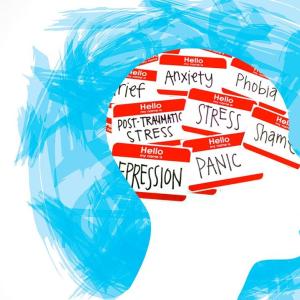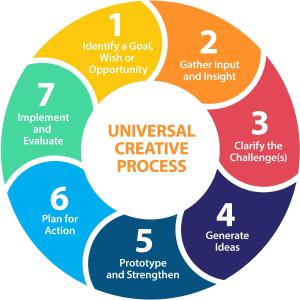10 Surprising Pop Psychology Myths and the True Science Behind Them
My goal is to teach the true science that drives our thoughts and behaviors. So, I decided to conquer ten of the most popular psychology myths and explain the science behind why they are false.
Smiling is the secret to happiness
The Myth:
In recent years, positive psychology has touted the idea that if you’re having a bad day, all you have to do is smile and you will almost instantaneously become happier. It’s a wonderful idea–after all, if it was that easy to boost your mood we all could be happy every day. But, just like smiling can’t solve our problems, it can’t take away the unhappiness that comes from experiencing negative events and believing that they may negatively affect your mental health.Another problem with this myth is that it promotes the idea that we should be happy all the time, which actually can make people feel worse. As the science shows, a fake smile isn’t enough to make people feel better.
However, like most myths, there is a grain of truth to this one. If you’re just having an off day without any identifiable negative emotions such as feeling sad, angry, fearful, etc., then smiling can boost your mood. This is because you’re not attempting to force yourself to shift from one strong emotion to another. Instead, you’re choosing to shift from a relatively neutral state to a positive one. The key to this is doing a real smile, not a fake one
enuine happiness causes the muscles near the eye to activate, so if you only move your lips upward, your brain won’t receive the signal to be happy.
The Science:
If you are experiencing a negative emotion such as anger, sadness, grief, fear, etc., a fake smile to cover up your emotions will make you feel worse. Research shows that suppressing feelings raises your stress level and can cause you to dwell on the negative emotions for longer than if you accept and express your emotions in the moment. Obviously, certain contexts, such as professional environments or elsewhere in public, may not be appropriate places to express your emotions. In those cases, a fake smile may be necessary but, when you do so, internally validate your emotions so you don’t experience the negative effects of fully suppressing them.
Venting helps you overcome anger
The Myth:
As you learned in the happiness myth, suppressing emotions is harmful, but so is venting them. A lot of people mistakenly believe the fastest way to deal with anger is to yell, rant and otherwise let it all out.
The Science:
Research shows that venting has the opposite effect than that intended. Rather than calm you down, venting positively reinforces your anger, causing you to become more angry for a longer period of time. Instead of venting, express your anger in a more productive way, such as taking a brief break from the triggering situation, identifying the causes of your anger and seeing if you can fix any of them, or channel your anger into an activity such as exercise or art
People are more creative when they brainstorm in groups
The Myth:
Today’s business world is more eager than ever to promote collaboration based on the popular belief that multiple heads are better than one. While it is true that we benefit from getting feedback and learning from one another, it’s a myth that groups can brainstorm more and better ideas than single individuals.
The Science:
According to the American Institute of Graphic Arts (and a bunch of other research institutions), group brainstorming sessions have three characteristics that limit creativity:
Anchoring: This is a cognitive bias that causes us to struggle to consider other options once we’ve “anchored” on one we like. Groups often hear a good idea in the beginning of their session and fail to come up with more, and potentially better ideas after it.
Groupthink: Anchoring is strengthened by groupthink. Groupthink is when peer pressure (whether intentional or not) causes members of a group to think the same way, which prevents unique ideas from being heard or even spoken aloud.
Pressure: Having to come up with good ideas on the spot while surrounded by coworkers whom they may want to impress can put incredible pressure on some people, which limits their ability to think creatively.
Instead of team brainstorming, give people the opportunity to talk individually or in small groups so they can come up with as many creative ideas as possible, then have them share their ideas with the team for feedback.
You are left-brained or right-brained
The Myth:
You’ve probably heard a highly creative person proclaim they’re right-brained or an analytical person state they are left-brained. The idea that we have a dominant side of our brain that determines how artistic or logical we are is based on how each half of our brain controls different activities.
The Science:
The idea that people have different dominant sides of their brains is completely false. Research shows that everyone uses both sides of their brains equally because, though most abilities are based in different regions of the brain, they are able to be carried out by the connections formed between different parts. Based on an individual’s lifestyle, it is possible for certain sections of the brain to become stronger because the brain has adapted to being under the same conditions for a prolonged period of time. However, that happens with individual parts not and an entire half of the brain.








































